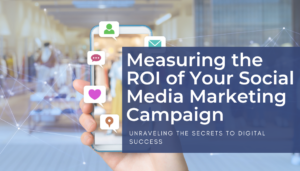In today’s digital landscape, content marketing has become a critical strategy for businesses to drive website traffic and connect with their target audience. Creating high-quality, valuable, and engaging content has the power to attract, engage, and retain users, ultimately leading to increased website traffic and conversions. However, with the ever-evolving nature of digital marketing, it’s essential to stay updated with effective content marketing techniques that can help you stay ahead of the competition. In this article, we will explore 10 content marketing tips that can significantly boost your website traffic. These tips will provide you with actionable insights to enhance your content marketing efforts and drive more traffic to your website. Let’s dive in and unlock the potential of content marketing in increasing your website traffic!
Tip 1: Know Your Target Audience
One of the foundational pillars of effective content marketing is understanding your target audience. Knowing your audience’s needs, interests, preferences, and pain points is crucial in creating content that resonates with them. Here are some detailed explanations and examples, along with relevant statistics and case studies, to support this tip:
Conduct Audience Research
Conducting thorough audience research helps you gain insights into your target audience’s demographics, psychographics, behavior, and preferences. This can be done through surveys, interviews, social listening, and website analytics. For example, you can use tools like Google Analytics, social media analytics, and customer feedback to gather data on your audience’s age, gender, location, interests, online behavior, and content preferences.
Create Buyer Personas
Once you have collected data through audience research, you can create buyer personas – fictional representations of your ideal customers. Buyer personas help you understand your audience on a deeper level. It lets you create content that specifically addresses their needs and interests. For instance, if you’re a fitness brand, you may create buyer personas like “Gym Enthusiast Emily” or “Health-conscious Harry” who represent your target audience and their unique characteristics.
Address Pain Points
Understanding your audience’s pain points – the challenges, problems, or obstacles they face – allows you to create content that provides solutions and adds value. For instance, if you’re a financial advisor, you may create content addressing common pain points such as “How to Save for Retirement” or “Managing Debt: A Step-by-Step Guide.” By addressing pain points, you position yourself as a helpful resource and attract users seeking solutions.
Personalize Content
Personalization is a powerful content marketing tactic that involves tailoring content to individual users or segments of your audience. According to a study by Evergage, 88% of marketers reported a measurable lift in business results due to personalization efforts. For example, you can use dynamic content, email segmentation, or personalized landing pages to deliver content that is relevant and resonates with each user, increasing engagement and driving traffic.
Case Study: HubSpot’s Targeted Blog Content
HubSpot, a leading inbound marketing and sales platform, used audience research and personalization to drive website traffic. They identified their target audience as small business owners and marketers and created buyer personas based on their research. They then used dynamic content to personalize their blog content based on user behavior and interests. This resulted in a 16% increase in click-through rates and a 20% increase in leads.
According to a study by Content Marketing Institute, 71% of B2B marketers prioritize understanding their audience when creating content. 93% of the most successful content marketers focus on their audience’s needs rather than their organization’s promotional message.
Tip 2: Create High-Quality and Valuable Content
Creating high-quality and valuable content is the foundation of any successful content marketing strategy. Your content should be informative, engaging, and relevant to your audience’s needs and interests. Here are some detailed explanations and examples, along with relevant statistics and case studies, to support this tip:
Conduct Keyword Research
Keyword research is the process of identifying the words and phrases that your audience uses to search for content online. By incorporating relevant keywords into your content, you can optimize it for search engines and increase its visibility. For example, if you have a travel blog, you may conduct keyword research using tools like Google Keyword Planner or SEMrush to identify popular search queries related to travel destinations, packing tips, or travel itineraries.
Provide Unique and Original Content
Creating unique and original content sets you apart from your competitors and establishes you as a thought leader in your industry. Avoid duplicating content from other sources, and strive to provide new insights, perspectives, or solutions. For example, you can conduct original research, share personal experiences, or provide in-depth tutorials or guides that offer value to your audience.
Use Different Content Formats
Experiment with different content formats such as blog posts, infographics, videos, podcasts, or interactive quizzes. This will cater to different learning preferences and engage with a wider audience. For example, you can create visually appealing infographics that simplify complex concepts or create engaging videos that showcase your products or services in action.
Focus on User Experience
User experience (UX) is crucial in content marketing. Your content should be easy to read, visually appealing, and accessible across different devices. Use headings, bullet points, and images to break up content and make it more scannable. Ensure your website loads quickly, is mobile-friendly, and has a clear call-to-action (CTA) for users to take, such as subscribing to a newsletter.
Case Study: Red Bull’s Content Strategy
Red Bull, a global energy drink brand, is known for its successful content marketing strategy. They create high-quality and valuable content in the form of extreme sports videos, articles, and social media posts that resonate with their target audience of adventure seekers and adrenaline junkies. Their content focuses on storytelling, lifestyle, and entertainment rather than directly promoting their product. As a result, Red Bull has built a loyal following and has over 85 million subscribers on YouTube, driving significant traffic to their website.
According to a study by Demand Metric, content marketing generates three times more leads than traditional marketing and costs 62% less. High-quality and valuable content is crucial in attracting and retaining users, driving engagement, and ultimately increasing website traffic.
Tip 3: Optimize Your Content for SEO
Optimizing your content for search engines is crucial to increase your website traffic. By incorporating SEO (Search Engine Optimization) best practices into your content creation process, you can improve your website’s visibility on search engine results pages (SERPs) and attract organic traffic. Here are some detailed explanations and examples, along with relevant statistics and case studies, to support this tip:
Conduct On-Page SEO
On-page SEO involves optimizing various elements on your webpages to make them more search engine-friendly. This includes optimizing your title tags, meta descriptions, headers, URL structure, and keyword usage. For example, you can ensure your title tags and meta descriptions are relevant, compelling, and include targeted keywords to improve click-through rates (CTRs) from search results.
Use Relevant Keywords
Incorporating relevant keywords throughout your content is essential for SEO. Research and identify the keywords your target audience is searching for, and strategically place them in your content. Avoid keyword stuffing, which can negatively impact your SEO efforts. For example, if you have a food blog, you can use keywords like “healthy recipes,” “easy dinner ideas,” or “vegan desserts” in your content to optimize it for relevant searches.
Create High-Quality Backlinks
Backlinks, also known as inbound links, are links from other websites that point to your content. Having high-quality and relevant backlinks can improve your website’s authority and visibility on search engines. You can create backlinks through guest posting, outreach to industry influencers or bloggers, or by creating valuable and shareable content that other websites would want to link to.
Improve Website Loading Speed
Website loading speed is a critical factor in SEO. Slow-loading websites can result in higher bounce rates and lower search engine rankings. You can optimize your website’s loading speed by compressing images, minifying CSS and JavaScript files, using a content delivery network (CDN), and choosing a reliable hosting provider.
Case Study: Moz’s SEO Strategy
Moz, a well-known SEO software company, has a strong content marketing strategy that includes optimizing their content for SEO. They conduct thorough keyword research to identify popular search queries in the SEO industry and use those keywords strategically in their content. They also focus on creating high-quality, shareable content that attracts natural backlinks from authoritative websites, helping them improve their website’s authority and visibility on search engines.
According to a study by Search Engine Journal, websites that rank on the first page of Google search results receive 92% of all organic traffic, while the second page receives only 5% of the traffic. Optimizing your content for SEO is crucial to improve your website’s visibility on search results and driving organic traffic to your website.
Tip 4: Utilize Social Media to Drive Website Traffic
Social media platforms can be powerful tools to increase website traffic through content marketing. With billions of active users on various social media platforms, leveraging social media can help you reach a wider audience, engage with your target audience, and drive traffic to your website. Here are some detailed explanations and examples, along with relevant statistics and case studies, to support this tip:
Create Engaging Social Media Content
Creating engaging and shareable content on social media can help you attract more followers, increase brand awareness, and drive traffic to your website. Share snippets of your content, such as blog posts, videos, infographics, or podcasts, on social media with compelling captions and visuals to entice users to click through to your website for more information.
Utilize Relevant Hashtags
Hashtags can help your content reach a wider audience on social media platforms. Research and use relevant hashtags that are popular in your niche or industry to increase the visibility of your content. This can help you attract more users who are interested in your content and drive traffic to your website.
Engage with Your Audience
Social media is a two-way communication channel, and engaging with your audience can help you build relationships, foster brand loyalty, and drive traffic to your website. Respond to comments, messages, and mentions promptly, ask questions, conduct polls, and encourage discussions to encourage users to engage with your content and visit your website for more information.
Collaborate with Influencers
Influencer marketing can be a powerful strategy to drive traffic to your website. Partnering with influencers in your niche or industry can help you tap into their large and engaged audience, generate buzz around your content, and drive traffic to your website through their endorsements and promotions.
Case Study: Airbnb’s Social Media Strategy
Airbnb, a global online marketplace for lodging and travel experiences, has a strong social media strategy that focuses on creating engaging content and fostering community engagement. They share user-generated content, such as travel photos and stories, on their social media platforms with relevant hashtags to encourage users to engage with their content and visit their website to book accommodations. They also collaborate with influencers to promote their brand and drive traffic to their website, resulting in increased brand awareness and website traffic.
According to a study by Sprout Social, 71% of consumers who have a positive experience with a brand on social media are likely to recommend that brand to others. By utilizing social media to engage with your audience, share engaging content, and collaborate with influencers, you can create a positive brand experience and drive traffic to your website.
Tip 5: Incorporate Visual Content to Increase Website Traffic
Visual content, such as images, infographics, videos, and presentations, can greatly enhance your content marketing efforts and increase website traffic. Visuals are highly engaging and can help convey complex information in a more easily digestible format. Here are some detailed explanations and examples, along with relevant statistics and case studies, to support this tip:
Use High-Quality and Relevant Images
Incorporating high-quality and relevant images in your content can make it more visually appealing and shareable. Images can help break up text, add visual interest, and convey your message more effectively. For example, if you have a blog post about a recipe, including high-quality images of the dish can make your content more enticing and encourage users to visit your website for the recipe details.
Create Informative Infographics
Infographics are a popular form of visual content that presents information in a visually appealing and easy-to-understand format. They can help you convey complex data, statistics, or processes in a visually appealing way. For example, if you have a blog post about digital marketing trends, creating an infographic with relevant statistics and trends can make your content more shareable on social media and drive traffic to your website.
Produce Engaging Videos
Videos are highly engaging and can help you convey your message in a more dynamic and immersive way. You can create various types of videos, such as explainer videos, tutorials, interviews, or behind-the-scenes videos, to complement your content and drive traffic to your website. For example, if you have a blog post about fitness tips, creating a video with workout demonstrations or tips can help users better understand the content and encourage them to visit your website for more information.
Utilize Slide Presentations
Slide presentations, such as those created with PowerPoint or Google Slides, can be a creative way to present information in a visually appealing format. You can create slide presentations to summarize your content, share insights, or provide additional information that complements your written content. Slide presentations can be shared on platforms like SlideShare or embedded in your blog posts, and they can drive traffic to your website when users view or download them for further reference.
Case Study: Buzzfeed’s Use of Visual Content
Buzzfeed, a popular online media company, has effectively incorporated visual content in their content marketing strategy to increase website traffic. They use a combination of images, infographics, videos, and slide presentations to create highly shareable and engaging content across their platforms. Their visually appealing content is often shared on social media, resulting in increased brand exposure and website traffic.
According to a study by Venngage, content with relevant images gets 94% more views than content without images. Visual content can significantly enhance the engagement and shareability of your content, resulting in increased website traffic and user engagement.
Tip 6: Guest Blogging and Influencer Outreach
Guest blogging and influencer outreach are powerful tactics that can help you expand your reach, increase your website traffic, and build valuable relationships with industry influencers. Here are some detailed explanations and examples, along with relevant statistics and case studies, to support this tip:
Guest Blogging
Guest blogging involves writing and publishing content on other websites or blogs within your industry or niche. It allows you to tap into the existing audience of those websites and expose your content to a wider audience. Guest blogging can help you establish your authority, generate backlinks to your website, and drive traffic from the websites where your content is published.
Influencer Outreach
Influencer outreach involves building relationships with influencers in your industry or niche and collaborating with them to promote your content or products. Influencers are individuals who have a large following and influence over their audience, and their endorsement can help you reach a wider audience and drive traffic to your website.
Case Study: Buffer’s Guest Blogging Strategy
Buffer, a social media management platform, has successfully implemented a guest blogging strategy to increase their website traffic. They have written guest posts for popular marketing and business blogs, including Inc., Fast Company, and Entrepreneur, among others. This has allowed them to tap into new audiences, generate backlinks, and drive traffic to their website, ultimately contributing to their overall content marketing success.
According to a study by Orbit Media, 61% of bloggers who engage in guest blogging report positive results, including increased website traffic and brand exposure. Guest blogging can be an effective way to expand your reach and drive traffic to your website by leveraging the audience of other websites.
Influencer Outreach Case Study: Daniel Wellington’s Influencer Campaign
Daniel Wellington, a popular watch brand, has successfully used influencer outreach to drive website traffic and increase sales. They have collaborated with influencers on social media platforms, such as Instagram, to promote their watches and provide exclusive discount codes. This has resulted in increased brand exposure, website traffic, and conversions, contributing to their overall marketing success.
Tip 7: Use Email Marketing to Drive Website Traffic
Email marketing is a powerful tool for content marketers to engage with their audience, build relationships, and drive traffic to their websites. Here are some detailed explanations and examples, along with relevant statistics and case studies, to support this tip:
Build an Email List
Building an email list is essential for effective email marketing. You can create opt-in forms on your website, blog, or social media profiles to collect email addresses from interested visitors. You can also offer incentives, such as exclusive content or discounts, to encourage people to subscribe to your email list.
Personalize and Segment Emails
Personalization and segmentation are crucial for effective email marketing. You can segment your email list based on factors such as demographics, interests, or behaviors, and send personalized content to each segment. This can help you deliver relevant content to your audience and improve engagement.
Use Email Newsletters
Email newsletters are a popular form of email marketing that allows you to regularly communicate with your audience and drive traffic to your website. You can share your latest blog posts, news, updates, and promotions through newsletters to keep your audience informed and engaged.
Case Study: Grammarly’s Email Marketing Campaign
Grammarly, an online writing assistant tool, has a successful email marketing campaign that has contributed to their website traffic and user engagement. They send personalized emails to their subscribers with content tailored to their writing habits and interests. This has resulted in increased engagement, website traffic, and user retention, ultimately contributing to their overall content marketing success.
According to a study by Campaign Monitor, personalized emails have a 26% higher open rate and a 760% higher revenue compared to generic emails. Email marketing can be a highly effective strategy to engage with your audience, drive traffic to your website, and improve conversions.
Tip 8: Repurpose Content
Repurposing content is a smart strategy for content marketers to maximize the reach and impact of their content. It involves taking existing content and repackaging it in different formats or targeting it to different platforms to reach new audiences. Here are some detailed explanations and examples, along with relevant statistics and case studies, to support this tip:
Create Different Content Formats
Repurposing content involves creating different content formats from your existing content. For example, you can turn a blog post into a video, an infographic, a podcast, or an ebook. This allows you to reach different types of audiences who prefer different content formats.
Target Different Platforms
Repurposing content also involves targeting different platforms where your audience might be present. For example, you can share your content on social media, content aggregation platforms, or industry-specific forums to reach new audiences who may not be aware of your website.
SEO Benefits
Repurposing content can also have SEO benefits. By targeting different platforms and creating different content formats, you can generate backlinks from different sources, increase your website’s visibility in search results, and drive more organic traffic.
Case Study: HubSpot’s Content Repurposing Strategy
HubSpot, a leading inbound marketing and sales platform, has a successful content repurposing strategy that has helped them reach a wider audience and increase website traffic. They repurpose their blog posts into various content formats such as videos, podcasts, ebooks, and social media posts. This allows them to cater to different audience preferences and reach new audiences on different platforms.
According to a study by Content Marketing Institute, 60% of marketers repurpose content 2-5 times, and 29% repurpose content 6 or more times. Repurposing content can significantly extend the lifespan of your content, increase its reach, and drive more traffic to your website.
Tip 9: Engage with Your Audience to Increase Website Traffic
Engaging with your audience is a crucial aspect of content marketing that can help increase website traffic. It involves actively interacting with your audience, responding to their comments and messages, and building a community around your content. Here are some detailed explanations and examples, along with relevant statistics and case studies, to support this tip:
Respond to Comments and Messages
When your audience leaves comments on your blog posts, social media posts, or other content, make sure to respond promptly and thoughtfully. This shows that you value their input and encourages further engagement. Similarly, respond to messages or inquiries from your audience in a timely manner.
Encourage User-Generated Content
User-generated content (UGC) refers to content created by your audience, such as reviews, testimonials, or user-submitted stories. Encouraging UGC can help you build a community around your content and foster engagement.
Foster Community Engagement
Building a community around your content can also foster engagement and drive website traffic. Create forums, groups, or communities on social media where your audience can connect with each other, share their thoughts and experiences, and discuss topics related to your content.
Case Study: Starbucks’ “White Cup Contest”
Starbucks, a global coffee chain, launched a user-generated content contest called the “White Cup Contest” in 2014. They encouraged customers to doodle on their plain white cups, take a photo, and share it on social media with the hashtag #WhiteCupContest. The winning designs were turned into limited-edition Starbucks cups. The contest generated thousands of entries and widespread social media buzz, driving traffic to Starbucks’ social media accounts and website.
According to a study by Stackla, 86% of consumers say that authenticity is a key factor in deciding which brands they support. User-generated content is often perceived as authentic and trustworthy. It can significantly boost engagement, increase website traffic, and build brand loyalty.
Tip 10: Analyze and Optimize Your Results
Analyzing and optimizing your content marketing efforts is a crucial step in increasing website traffic. By continuously monitoring and evaluating your results, you can identify what’s working and what’s not. This allows you to make data-driven decisions, and optimize your content strategy for better performance. Here are some detailed explanations and examples, along with relevant statistics and case studies, to support this tip:
Track Key Metrics
Use analytics tools to track key metrics such as website traffic, engagement rates, conversion rates, and bounce rates. This will help you understand how your content is performing and identify areas that need improvement.
A/B Testing
Conduct A/B testing to optimize your content for better performance. Test different headlines, call-to-actions, layouts, and formats to identify what resonates best with your audience.
Use Insights to Refine Strategy
Analyze the data and insights gathered from your content marketing efforts to refine your content strategy. Identify trends, patterns, and areas for improvement, and make data-driven decisions to optimize your content for better performance.
Case Study: HubSpot’s Content Optimization System
HubSpot, a leading inbound marketing and sales software company, implemented a content optimization system to continuously analyze and optimize its content. They used A/B testing, heat maps, and other data-driven techniques to identify areas for improvement and optimize their content strategy. As a result, they saw a 300% increase in leads and a 66% increase in website traffic.
According to a study by Content Marketing Institute, 72% of content marketers use analytics tools to measure the performance of their content. Data-driven decision-making and optimization can significantly impact the success of your content marketing efforts and increase website traffic.
Final Thoughts
In conclusion, implementing effective content marketing strategies is crucial for increasing website traffic and achieving online success. By following the 10 content marketing tips outlined in this article, you can improve your website’s visibility, engagement, and conversions. However, navigating the world of content marketing can be complex. It may require expertise and experience to achieve optimal results.
At DarkSky Digital, we are a digital marketing agency with a team of experienced SEO content writers who can help you craft compelling content that drives traffic to your website. Our content marketing services are tailored to your business needs. We utilize industry best practices to create high-quality, valuable, and optimized content that resonates with your target audience.
If you’re looking to take your content marketing efforts to the next level and drive more traffic to your website, contact us today to learn how we can help. Don’t miss out on the opportunity to leverage the power of content marketing to grow your online presence and achieve your business goals. Let’s work together to create content that captivates your audience and increases your website traffic. Contact DarkSky Digital now!
Read More On Our Blog:
- Understanding the Basics of Pay-Per-Click Advertising: A Beginner’s Guide

- 5 Types of Content Every Marketer Should Know About

- The Impact of Customer Reviews on Your Online Reputation

- Measuring the ROI of Your Social Media Marketing Campaign: Unraveling the Secrets to Digital Success

- Content Marketing vs. Traditional Advertising: Which is More Effective?

- Title: The Future of SEO: Unlocking the Secrets to Digital Success


